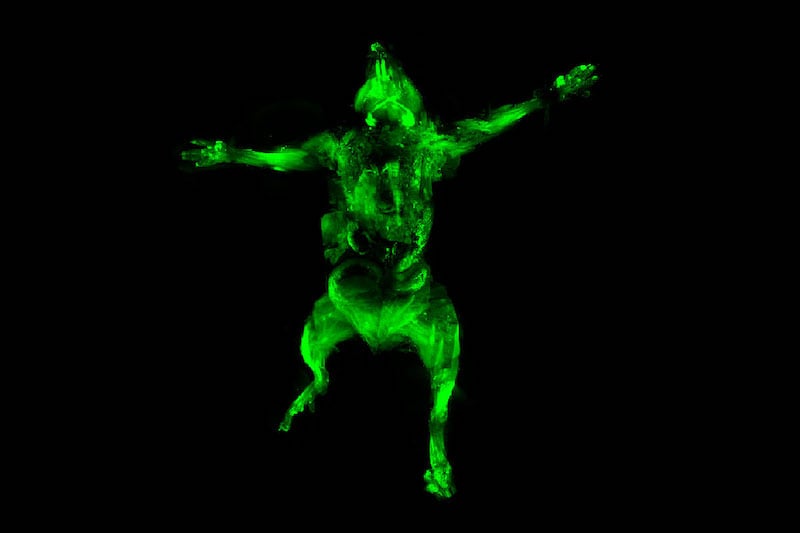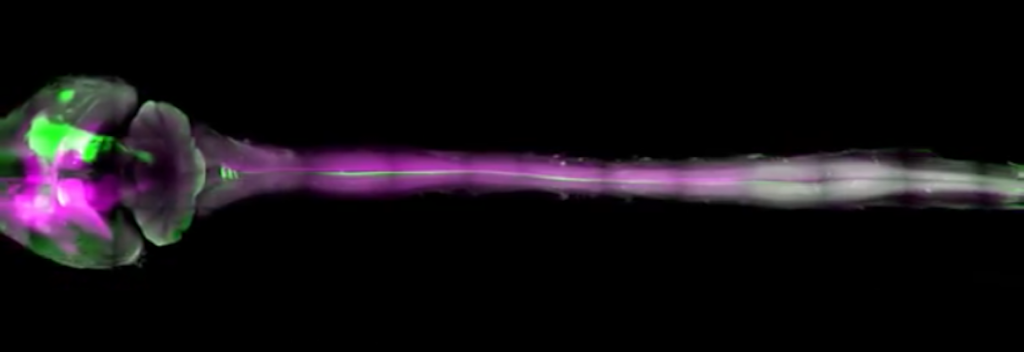uDISCO could be the name of Munich’s newest, hottest club. Indeed, it stands for ‘ultimate DISCO’ and boasts mesmerizing green lights. But it’s actually something much more exciting: it’s a new method that renders mice transparent to improve anatomical imaging.
![]() A team of researchers headed by Prof. Ali Ertürk at Ludwig Maximilian University in Munich, Germany, has turned mice into ‘ghosts’ using a new technique. It has been dubbed, ‘uDISCO‘ for ‘ultimate DISCO,’ and it was just published in Nature Methods. Ertürk hopes that uDISCO will lead to improvements in our understanding of neurological trauma and diseases like Alzheimer’s, Schizophrenia and Multiple Sclerosis.
A team of researchers headed by Prof. Ali Ertürk at Ludwig Maximilian University in Munich, Germany, has turned mice into ‘ghosts’ using a new technique. It has been dubbed, ‘uDISCO‘ for ‘ultimate DISCO,’ and it was just published in Nature Methods. Ertürk hopes that uDISCO will lead to improvements in our understanding of neurological trauma and diseases like Alzheimer’s, Schizophrenia and Multiple Sclerosis.

After mice are sacrificed for study, their bodies are flushed with a special cocktail for several days in order to clear fat and water and make them see-through. This allows for cleaner, crisper images of neural and cardiovascular networks from a laser scanner.
From a composite of these images, Ertürk’s team generated a 3D model of the nervous system (explored in the video below). His mice glowed due to the genetic augmentation of a fluorescent green protein, but the same effect could be achieved in humans with fluorescent antibodies to study this system.
Neural circuits can be severed in dissection, and Ertürk’s technique represents a valuable alternative to avoid this pitfall. Furthermore, it shrinks the mouse bodies to roughly one-third their original size so they fit under a microscope. Ertürk plans to scale up to apply this technique to rats and perhaps monkeys to further study traumatic brain injuries and their effect on the central nervous system. He also believes it will be useful to the study of psychiatric disease and neurological disorders.
The brain remains a major frontier in medicine. Mental illness is generally poorly understood, head injuries are notoriously unpredictable (Ertürk’s motivation), and neurodegenerative diseases remain without cures. Biotech is stepping up to the challenge!
3D Model of Mouse Neural Network
Images and video provided to New Scientist courtesy of Ali Ertürk. Read the original post here.
Journal reference: Nature Methods, DOI: 10.1038/nmeth.3964





